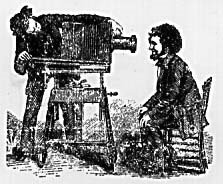Joe Sacco's Palestine is the result of the author's personal journey to Palestine and Israel in 1991/1992. The graphic novel collects different publications chronologically organized into nine chapters with a foreword by Edward Said. The first eight chapters are primarily based on the author's dialogues with Palestinians, for the author is at the same time a character in the story.
The last chapter instead sees Joe Sacco in Jerusalem escorting and escorted by two Israeli women. The narration of the events is therefore unevenly balanced in favour of the Palestinians' point of view. However, I believe that the author is not trying to manipulate the reader or propagandize a determined ideological standing point as He makes his choice clear from the beginning and even dedicates the entire ending chapter to convey that there is a counter side of the story. The novel, seen from this point of view, is actually a work of journalism since Joe Sacco is giving voice -and shape too- to a displaced and often silenced minority of the Middle East.
The main theme of the novel is perhaps the fact that there's one land for two peoples, together with all the cultural and non-cultural implications that come with this. The Israeli-Palestinian conflict seriously makes an issue in itself and can be seen from many points of view: the author's main concern is to tell their stories (not his), to portray the everyday life of the Palestinians and its many, unquestionable difficulties. The city also plays a role throughout the novel: Jerusalem is indeed the city par excellence, the prize of the conflict. Moreover, the lack of a city can be seen as a theme too. The Palestinians in fact don't really have a city but rather 'curfewed' villages. No such things as Benjamin's arcades or post-modern metropolis are present in the graphic novel, but a supportive community inhabiting occupied territories.
The visual style of the graphic novel is pretty much straightforward. The focus is mostly on the written text and the panels don't require a particular interpretative approach to be fully understood. The layout of the pages, however, is influenced by the content of the story: mainly geometrical when the author is in inner spaces, chaotic during the outdoors, messy when violence breaks out. Nevertheless there are also symbols that visually corroborate the written story, e.g. the mud that's all over the streets of Palestine or the walls that clearly define portions of space.
announcements
This blog was created by and for students in an Introduction to Cultural Studies class at the University of Washington. Through an investigation of urban experience and representation--in theory, in graphic novels and in our own "readings" of Seattle's University District--we considered the formation and history of cultural studies as an (anti)discipline, with a special emphasis on the questions, "What does cultural studies do, and how do you do cultural studies?"
If you'd like to know more about the class, the blog or our U-District artifact project, please contact Gabrielle Dean: gnodean@u.washington.edu.
If you'd like to know more about the class, the blog or our U-District artifact project, please contact Gabrielle Dean: gnodean@u.washington.edu.
Subscribe to:
Post Comments (Atom)
blog archive
-
▼
2008
(92)
-
▼
May
(26)
- Seattle U District: City Artifacts Map
- City Artifacts: What and Where?
- Researching History and its Representations...
- Palestine
- Persepolis 1 & 2
- Shutterbug Follies
- A Scanner Darkly
- Maus I & II
- A Scanner Darkly
- Maus I & II
- Shutterbug Follies
- Persepolis 1 and 2
- Postcards: True Stories that Never Happened
- Maus I & II
- Postcards: True Stories that Never Happened
- Persepolis 1 & 2
- Mail Order Bride
- Mail Order Bride: Mark Kalesniko
- Persepolis 1 & 2
- Shutterbug Follies
- Maus I and II
- Palestine
- Postcards: True Stories That Never Happened
- PALESTINE
- Postcards: True Stores That Never Happened
- Shutterbug Follies
-
▼
May
(26)

No comments:
Post a Comment